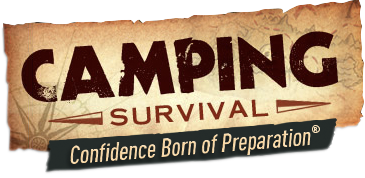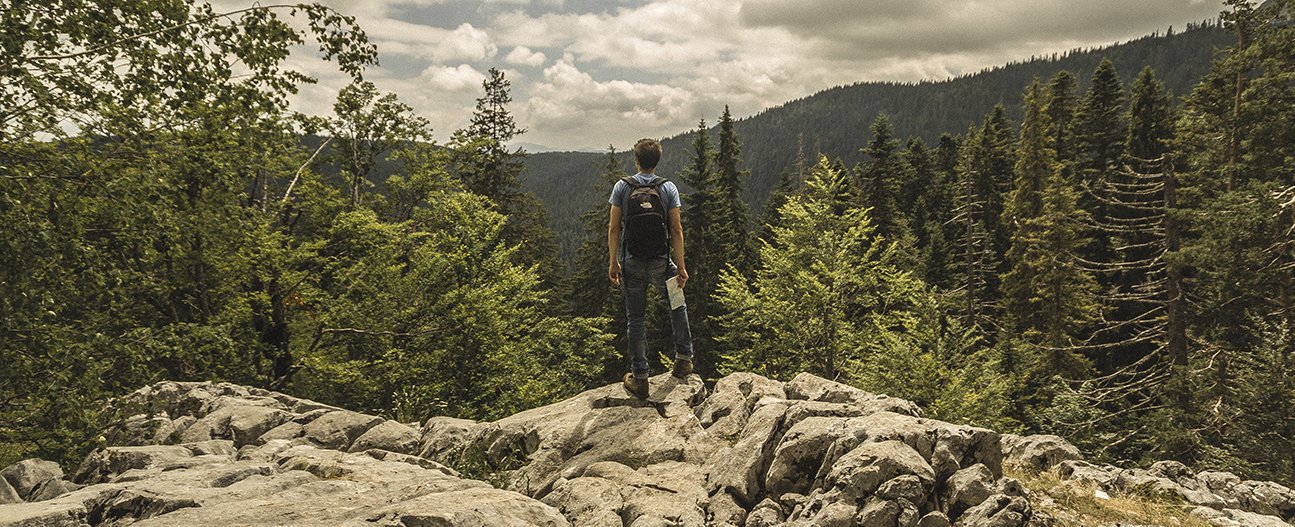No matter if you are packing for a weekend hike, or a Get Home Bag it is important to be prepared for emergency situations.
Dave Canterbury, the author of Bushcraft 101 came up with the 10 C’s of Survival many years ago. The concept isn’t unique, but by putting them in a list like this it made them easy to remember. He believes the first five items on the list are the most vital to have, and there should be some recumbency for those items in particular.
- Cutting tool
- Combustion device
- Cover/shelter
- Container
- Cordage
- Candling
- Cotton material
- Cargo Tape
- Compass
- Canvas needle
Now let us look at the list in more detail:
.
Cutting tool – the best possible option is to carry a full-tang knife, with a good multi-tool or pocket knife as a backup. Some people choose to add either a folding saw or an axe as well, with the folding saw usually being the preferred addition since it is lighter and more packable.
Combustion device – this should include at least 2-3 options for getting a fire started. BIC lighters are an inexpensive and popular item, followed by a ferro rod and a frensel lens. The lens allows you to use the sun to start a fire and while the ferro rod does take some practice to use, it will work even if it gets wet.
Cover/shelter – cover includes your clothing which of course should be appropriate for the weather, including what weather is expect for overnight even if you are only planning on a day hike. A simple reusable rain poncho can double as a tarp, but also carrying a lightweight waterproof tarp with you can offer you more means of creating shelter. Knowing how to create shelter from natural materials is also an important skill to have and one that can be acquired from watching YouTube videos and then spending some time practicing the skill.
Container – while any water bottle will do, the best method of purifying water is still boiling it. With that in mind the preferred container is a single wall stainless steel water bottle or canteen as those can be placed in the coals to boil water or cook food. Obviously if you are planning on being out for a longer period of time, then a bush pot or cooking utensil might come in handy. You can also use water purification tablets or a filtration device such as a Sawyer mini filter.
Cordage – this is the backbone of creating your shelter. #36 tarred bank line is great for lashing as it holds knots very well. Another option is mil-spec 550 paracord or Titan SurvivorCord which is paracord with 3 additional strands – snare wire, fishing line and fire tinder. Other option is mule tape which is flat cordage that is very lightweight with a strength rating more than double that of paracord.
Candling – refers to candle power of a flashlight. While it is nice to have a handheld flashlight for quick one-handed tasks having a headlamp for hands-free lighting is ideal. Having strobe option can also mean you have a means of signaling search and rescue in the dark.
Cotton Material – These should be at least 3’ square if possible, in order to create a sling or cravat. Bandanas need to consist of 100% cotton, so that they char well to create embering material for a fire. A bandana can be used for bandaging when cut in strips. A bandana can also become a hygiene device for washing up or to carry or bind things like fire wood. They make a good head covering to protect from the hot sun and are great for just dipping in a cool creek to take a break on the trail. And you can use them as a pre-filter to keep large sediment out of your water. And if you have at least one that is orange it can double as a daytime signaling device.
Cargo Tape – Also known as duct-tape with Gorilla brand tape being preferred due to its strength and stickiness. This can be used for everything from first aid to creating needed items. The adhesives in this tape are also highly flammable and a golf ball sized wad will burn for several minutes to help ignite and burn marginal tinder sources. It can actually be stripped into minute fibers and used to make an impromptu birds’ nest to be ignited by your Ferrocerium rod.
Compass – The compass must be capable of performing more functions than just walking a straight line on an azimuth or bearing. Your compass should have a mirror so that it can be used as a signal mirror and to look for ticks and lice and to inspect cuts in areas that cannot be seen without the aid of a mirror. This makes it functional for not only as a signaling device, but also first aid. If you can find a compass with a magnifying lens of at least 5 powers it will be useful as a backup fire starter as well. You will also want to have a map of the area and know how to properly use a compass.
Canvas Needle – This is also called a sail needle and a #14 size is a good size for making repairs to packs, tents, tarps or even clothing. It can also be used to remove splinters. Some people like to place one in an Altoid tin kit and others like to use Gorilla tape to secure it to their knife sheath. You could carry a conventional sewing needle as well, but it will not work anything other than clothing and needs thread. Whereas the sail needle can handle inner paracord fiber strands or bank line strands.
No matter what configuration you choose, keeping these 10 C’s in mind while packing will increase your comfort and odds of surviving an emergency situation.


2 comments
This is handy as I need to do a briefing to a group on the contents of a “Get Home Bag”. The ten C’s are in brilliant detail and after my research on Bugging out and survival, this is super valuable
THANK YOU VERY MUCH…